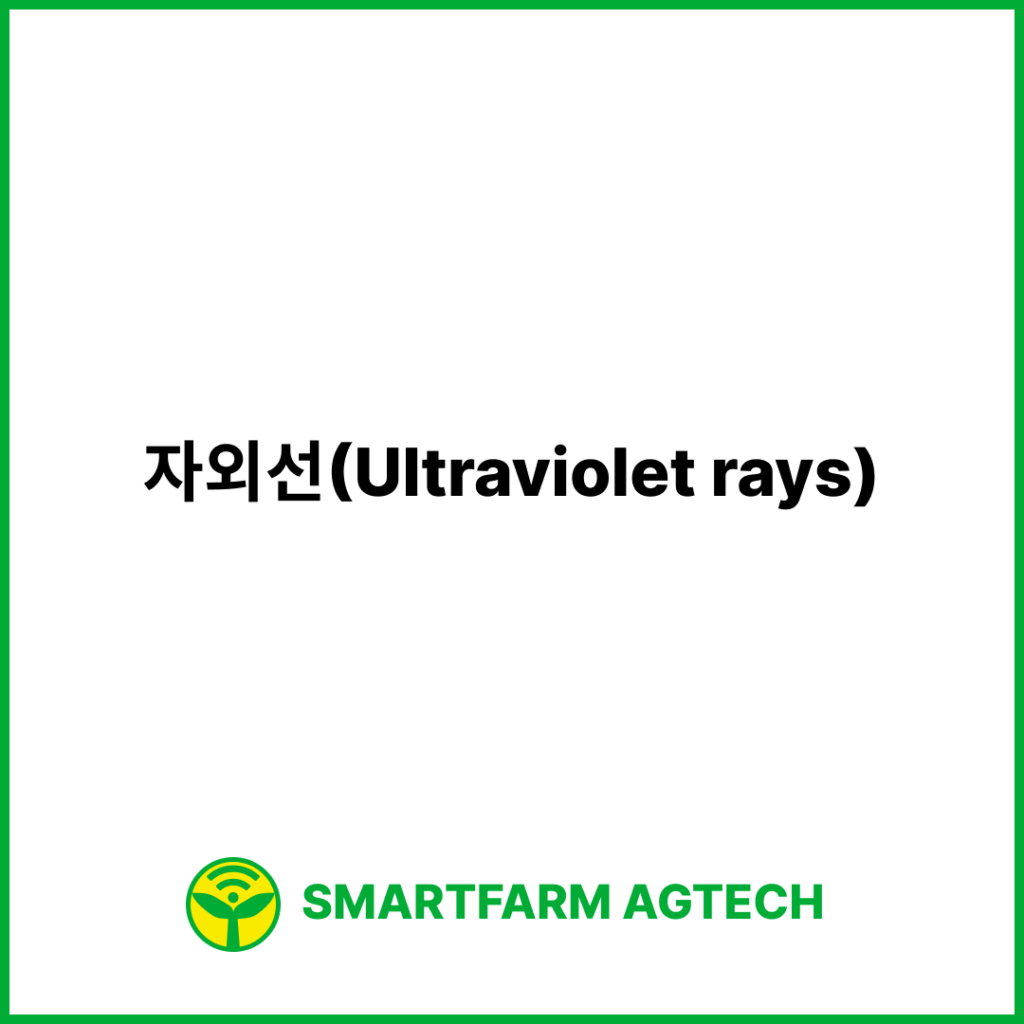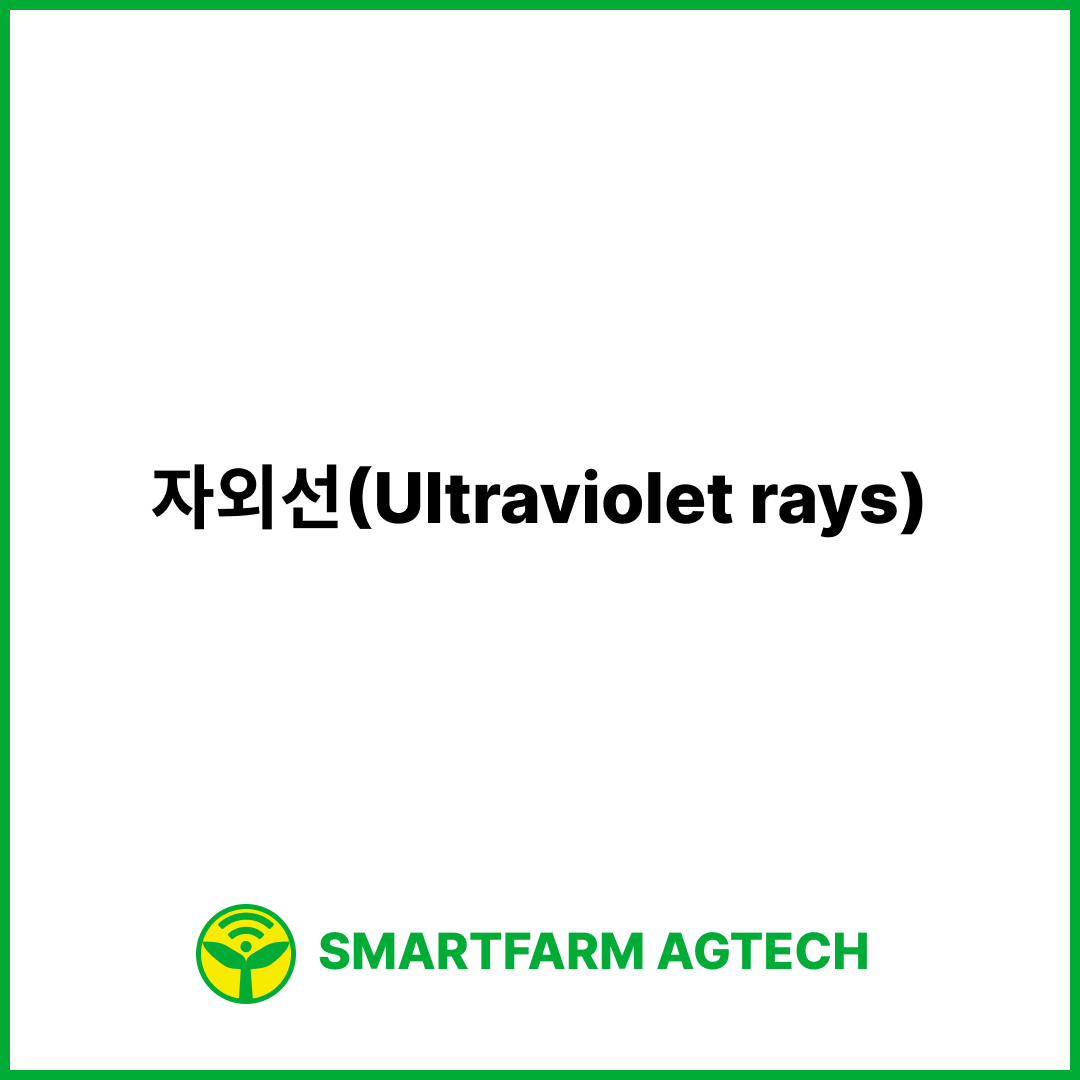자외선(Ultraviolet rays) | 스마트팜피디아 (Smartfarm Pedia)는 스마트농업관리사 혹은 스마트농업전문가라면 알아야 할 내용 중에 하나입니다. 자세한 내용은 아래의 내용을 통해 확인해보시기 바랍니다.
자외선(Ultraviolet rays) | 스마트팜피디아 (Smartfarm Pedia)
자외선(Ultraviolet rays)

“자외선” 또는 “자외선(UV) 선”은 가시광선보다 짧은 파장을 가지는 태양광 스펙트럼의 일부를 나타냅니다. 스마트팜에서 자외선은 식물의 생장과 발달에 중요한 역할을 합니다.
태양광 스펙트럼을 사진으로 찍을 때, 자외선은 가시광선 범위를 벗어나기 때문에 눈으로 볼 수 없습니다. 자외선은 파장 범위에 따라 다음과 같이 분류됩니다:
UV-C (100~280nm)
이것은 자외선 중 가장 짧은 파장 범위입니다. UV-C는 세균 및 바이러스와 같은 미생물을 효과적으로 죽일 수 있는 항균 특성으로 널리 사용됩니다. 스마트팜에서는 UV-C를 살균 및 질병 관리에 활용하여 식물을 깨끗하고 병원체가 없는 환경으로 유지하는 데 도움이 됩니다.
UV-B (280~320nm)
UV-B 선은 UV-C보다 약간 긴 파장을 가집니다. 이 선은 식물 생장에 긍정적이고 부정적인 영향을 동시에 미칩니다. 적절한 양의 UV-B 노출은 식물 내부의 플라보노이드나 안토시아닌과 같은 일부 이차 대사산물의 생성을 자극하여 식물의 스트레스 저항력을 강화시킬 수 있습니다. 그러나 과도한 UV-B 노출은 식물 조직에 손상을 줄 수 있고 성장을 억제할 수 있습니다.
UV-A (320~380nm)
UV-A 선은 세 가지 범주 중에서 가장 긴 파장을 가지고 있습니다. 이는 식물에 상대적으로 덜 해로운 선으로서, 광성 장단반응과 성장 및 발달 조절과 같은 다양한 생리적 반응을 조절합니다. UV-A 노출은 또한 식물의 색소, 향기 및 맛에 영향을 미칠 수 있습니다.
스마트팜에서는 다양한 UV 선 범위의 효과를 이해하여 생장 조건을 최적화하고 건강한 발달을 보장하는 데 중요합니다. 재배 중인 작물의 특정 요구에 따라 UV 빛을 전략적으로 사용하여 생장, 수량 및 품질과 관련된 원하는 결과를 촉진하는 데 활용할 수 있습니다.
Ultraviolet rays
“Ultraviolet rays,” also known as “UV rays,” refer to the portion of the sunlight spectrum that has wavelengths shorter than visible light. In smart farming, ultraviolet rays play a significant role in plant growth and development.
When capturing the spectrum of sunlight in a photograph, ultraviolet rays fall outside the range of visible light and are therefore not visible to the naked eye. Ultraviolet rays are categorized based on their wavelength ranges:
UV-C (100-280nm)
This is the shortest wavelength range of ultraviolet rays. UV-C is commonly used for its germicidal properties, as it can effectively kill microorganisms like bacteria and viruses. In smart farming, UV-C can be used for sterilization and disease control, helping to maintain a clean and pathogen-free environment for plants.
UV-B (280-320nm)
UV-B rays have slightly longer wavelengths than UV-C. These rays have both positive and negative effects on plant growth. In controlled amounts, UV-B exposure can stimulate the production of certain secondary metabolites in plants, such as flavonoids and anthocyanins, which can enhance the plant’s resistance to stressors like UV radiation and pests. However, excessive UV-B exposure can lead to damage in plant tissues and inhibit growth.
UV-A (320-380nm)
UV-A rays have the longest wavelength among the three categories. They are less harmful to plants and are responsible for various physiological responses in plants, including phototropism and the regulation of growth and development. UV-A exposure can also influence the plant’s pigmentation, aroma, and taste.
In smart farming, understanding the effects of different UV ray ranges on plants is crucial for optimizing growth conditions and ensuring healthy development. Depending on the specific needs of the crops being cultivated, UV light can be used strategically to promote desired outcomes in terms of growth, yield, and quality.
참고)
- 스마트팜피디아 SMARTFARMPEDIA – 바로찾는 스마트팜 용어집 (발간등록번호 11-1543000-003389-0

